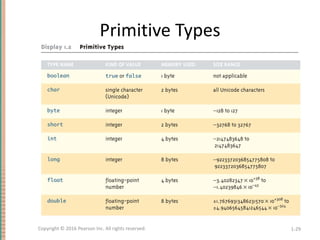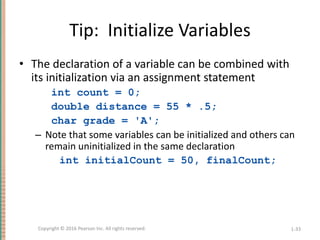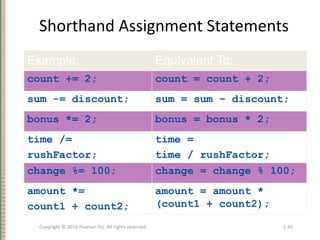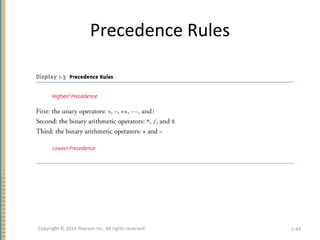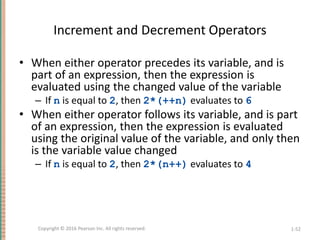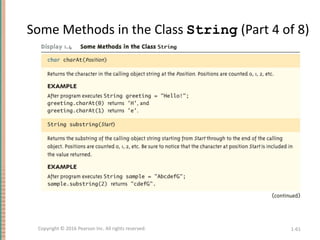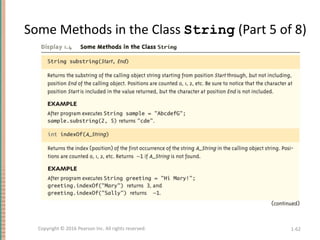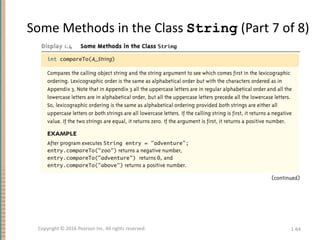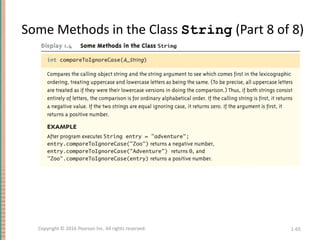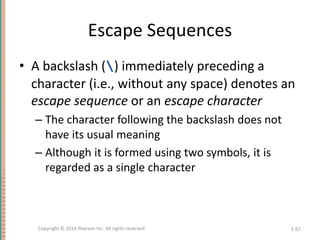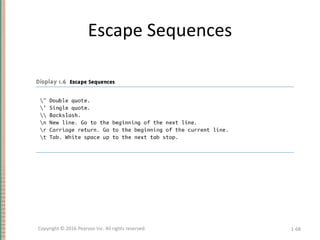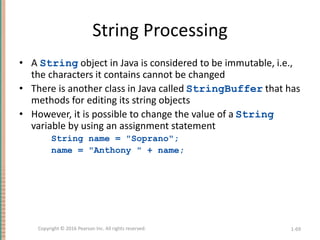This document provides an introduction to the Java programming language. It discusses that Java was created by Sun Microsystems in 1991 and was originally designed for programming home appliances. It describes how Java uses a two-step compilation process involving byte-code to make programs portable across different systems. The document also gives an overview of key Java concepts like objects, methods, classes, the main method, and variables.


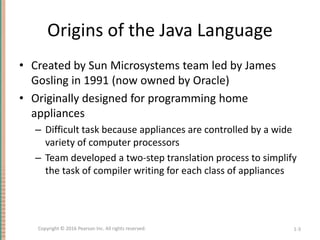



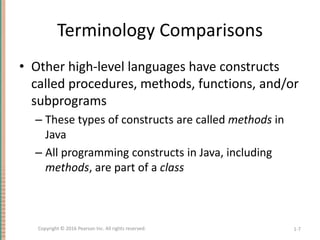






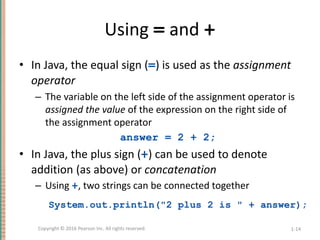






![Running a Java Program
• A Java program can be given the run command
(java) after all its classes have been compiled
– Only run the class that contains the main method (the
system will automatically load and run the other classes, if
any)
– The main method begins with the line:
public static void main(String[ ] args)
– Follow the run command by the name of the class only
(no .java or .class extension)
java FirstProgram
1-21
Copyright © 2016 Pearson Inc. All rights reserved.](https://image.slidesharecdn.com/chap1java6th-240215044928-9ea460f4/85/slides-of-textbook-Absolute-Java-chapter-1-21-320.jpg)







